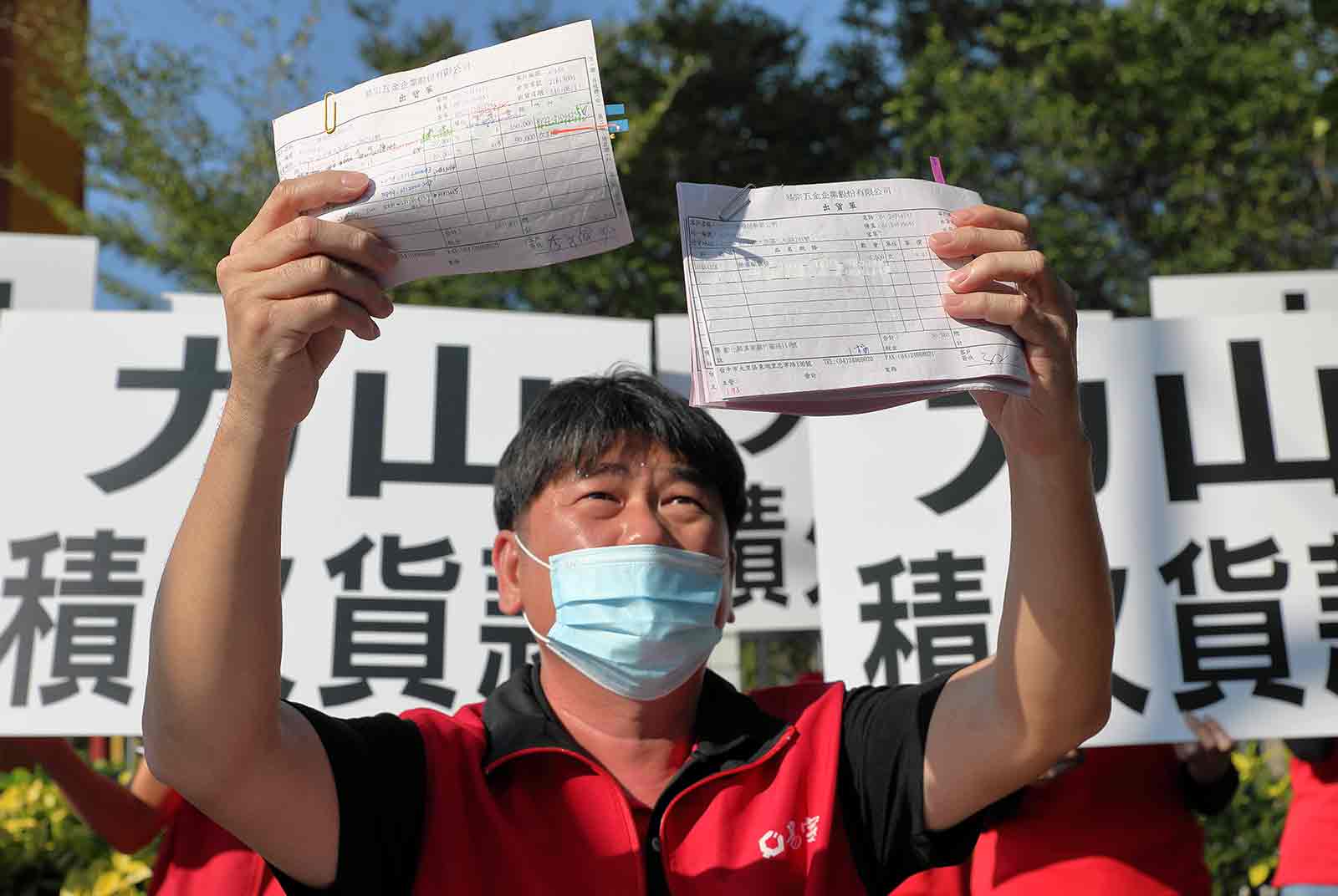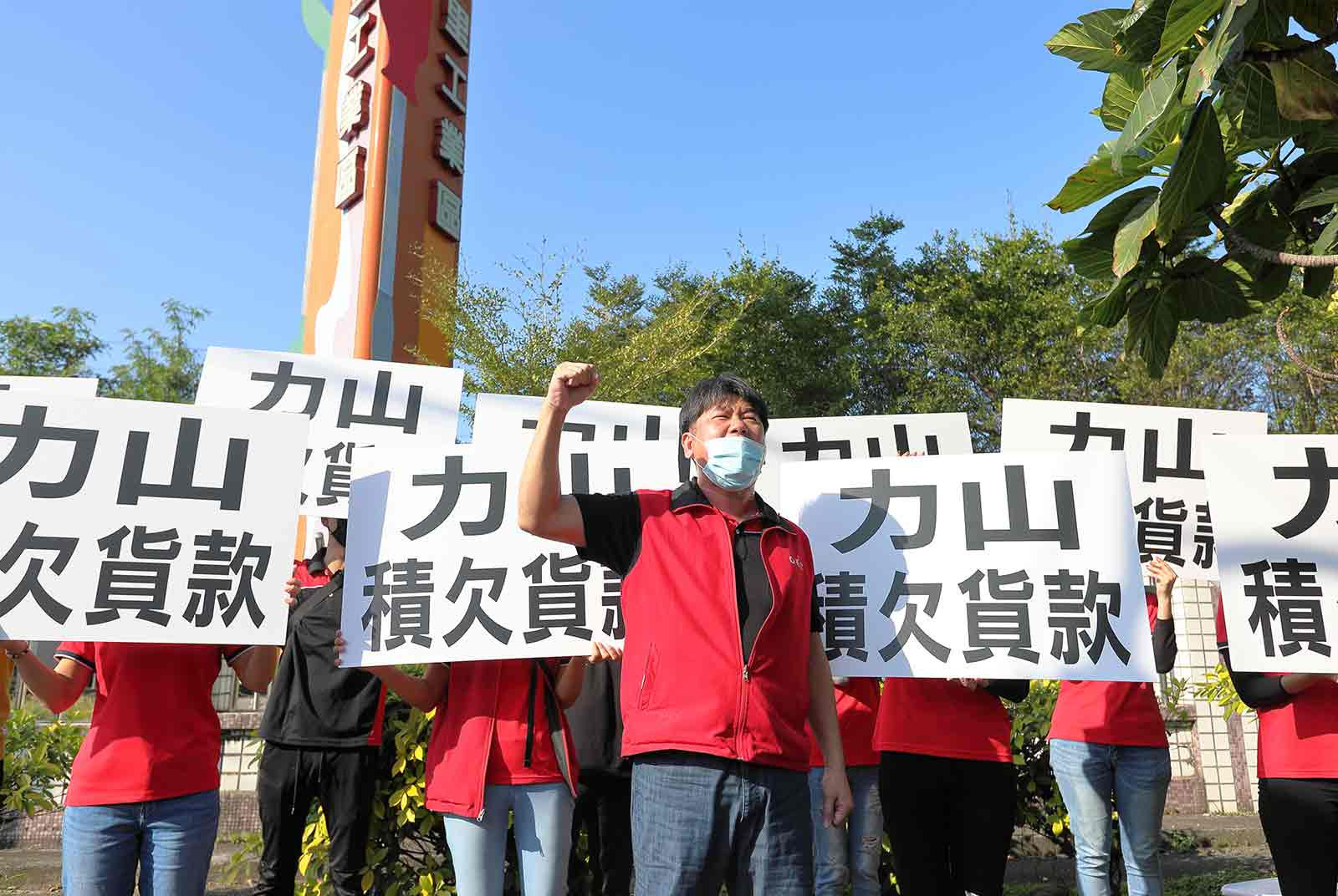As Peloton loses steam, Taiwan suppliers drown in inventory

Source:Chien-Tong Wang
In February, Rexon Industrial Corporation Limited, a contract manufacturer for Peloton, faced accusations of not paying its suppliers. Behind the problem is a pandemic-related craze for home exercise equipment that fizzled out faster than expected, leaving suppliers saddled with massive inventory problems.
Views
As Peloton loses steam, Taiwan suppliers drown in inventory
By Ching Fang Wuweb only
On February 9, the Tali Industrial Park in Taichung, a major hub for the machinery industry, saw some commotion.
In front of the Rexon headquarters, the boss of Rexon supplier Yi-zong Metal Hardware Co. Ltd. Wang Shih-kai staged a protest with his wife and some 20 employees in tow. Spanning a white banner across the street, they shouted, “Rexon owes us money, we want our money back!
Yi-zong is just the first supplier to fall victim to a rapid market turnaround. Consumer crazes, stoked by the stay-at-home economy, are rapidly losing steam as life returns to normal in many places. Founded 30 years ago, Yi-zong manufactures specialty screws, nuts and bolts and other hardware. Its paid-in capital stands at just NT$7 million.
At the protest, Wang brandished delivery slips and business meeting photographs. He claimed that Rexon had asked Yi-zong in early 2021 to build up inventory to fill orders for a large customer until 2024.
Rexon’s largest customer was American exercise bike startup Peloton.
Rexon, which started out as a woodworking machine maker, is Peloton’s sole supplier of treadmills, and the largest supplier for its exercise bikes.
Peloton’s business model of pairing fitness equipment for the home with subscriptions for digital content such as training classes took off during the pandemic when gyms were forced to close, and people holed up at home during lockdowns. In 2019, Peloton’s annual revenue was less than US$1 billion. But amid the pandemic in 2021, it quadrupled to US$4 billion.
 (Source: Chien-Tong Wang)
(Source: Chien-Tong Wang)
Rexon generates 70 percent of its revenue with home workout equipment
Consequently, the Peloton boom boosted Rexon’s financial performance, with annual revenue increasing to NT$8 billion, and its share price breaking the NT$100 mark for the first time.
Last May, Peloton had to recall a large number of treadmills after a series of injuries and a fatal accident. In November, CFO Jill Woodworth admitted in a call with analysts that “it is clear that we underestimated the reopening impact on our company and the overall industry." Anticipating flagging demand, Peloton lowered its prices by 20 percent in August to stimulate sales, but consumers did not respond.
As the vaccination rate rose, more people began to return to the gym for their workouts.
As a result, Peloton’s share price fell to the pre-pandemic level. At the same time, Planet Fitness, the largest fitness club chain in the United States, registered an unprecedented boom.
Home gym startup Mirror, which belongs to sports apparel brand Lululemon, has slashed its financial forecast for this year’s revenue in half. And Taiwanese home gym equipment manufacturers Rexon, Dyaco International and Strength Master reported a 40 percent revenue decline in January this year.
“The home fitness equipment business has already returned to the off-season peak-season cycles that wesaw before the pandemic,” notes Rexon Vice President Tank Chuang. A year like 2021 without any off-season is the exception. After the lockdowns were over, consumers reallocated the money that they originally planned to spend on home fitness equipment for travel or other purchases. This consumer trend reversal also injected uncertainty into Peloton’s business outlook.
 (Source: Chien-Tong Wang)
(Source: Chien-Tong Wang)
Inventory buildup in advance leaves suppliers in debt
Hardware manufacturer Wang was still in the process of stocking up on materials in anticipation of large orders when news from the American market turned less promising.
Wang says he told Rexon in September that he was concerned about Peloton’s business prospects but that he received a reassuring optimistic answer. “Rexon’s purchasing department notified us that orders would continue until March 2022,” Wang claims.
Wang says that, due to a tacit understanding among contract manufacturers, Yi-zong cannot produce any formal order slips from Rexon. Goods were regularly dispatched to Rexon subcontractors based on requirement slips. But when Yi-zong demanded the formal order slips from Rexon to invoice the deliveries, they never heard back.
“They have not paid for six months,” says Wang. More than half of Yi-zong’s production capacity is tied up for Rexon products. According to Wang, goods worth NT$2 million cannot be invoiced because of the missing formal order slips. And their warehouse holds inventory worth more than NT$80 million, which consists of bolts and other hardware made to customer specifications that cannot be sold to anyone else. “Yi-zong does not have any cash on the books anymore. I have the guts to stand up today because I am on the brink of death!” laments Wang.
“In our transactions with suppliers, we have always had written order forms; there aren’t these NT$2 million orders in our system,” says Chuang, refuting Wang’s accusations. That Yi-zong prepared large quantities of materials last year after the negative news on Peloton came out does not mean that Rexon made any promises. He says Rexon cannot take responsibility for inventory. “The pandemic situation changes too quickly, customers are fickle, and we can only predict the next month,” says Chuang in describing his predicament.
Last year was Rexon’s best year in terms of revenue, yet the orders placed with Yi-zong totaled only around NT$50 million. “Is it reasonable for them to hold inventory worth more than NT$80 million?” asks Chuang incredulously.
That Rexon and Yi-zong talk past each other also highlights the difficulties that small- and medium-sized contract manufacturers are facing after the pandemic.
“The unwritten rule with large factories is that the delivery cycle is shorter than the manufacturing cycle. For example, goods are delivered 60 days after the order is received but manufacturing time from zero to a finished product takes at least 90 days, which means you need to keep standing inventory,” says an entrepreneur in the Tali Industrial Park who spoke on condition of anonymity.
During the pandemic, when demand soared for many products and lockdowns disrupted global supply chains, contract manufacturers bought parts and materials wherever they could find them, regardless of price. Moreover, raw material prices rose by 50 percent over the past year. As a result, hoarding became normal among manufacturers as no one expected orders to be cut so quickly and dramatically.
Suppliers are hit by a double whammy of skyrocketing raw material prices and uncertainty over when urgently needed payments for delivered goods will be made. “Contract manufacturers are simply squeezed in the middle; revenues are reaching new highs but the profit growth rate does not increase,” says the unnamed entrepreneur.
“For sure, there is overbooking, but the truth is also that we have a labor shortage. This means that as soon as there are supply chain bottlenecks, the entire delivery period becomes longer. End-user demand will then be pulled forward, which leads to even more follow-up orders,” explains Liu Wen-ning, co-owner of Double Steel Co. Ltd., a materials vendor in the Tali Industrial Park.
An industry colleague who manufactures hand tools for the consumer market faces a similar situation.
After the lockdowns ended, demand for DIY home improvement declined. In the hand tool market there is already talk about a correction of order levels.
The stock prices of the large distributors and brand vendors consequently nosedived. “American customers serving the consumer market began to drag out the delivery period from the middle of last year,” notes T. W. Chang, chairman of Machan International Co. Ltd., which manufactures tool cabinets and other sheet metal products for major home improvement chains at home and abroad.
Is the home economy party already over?
“In the United States, inventory levels are still at a historic low. The ISM Manufacturing Customer’s Inventories Index stands at only 33, the normal level is around 50,” notes Chang Chien-yi, president of the Taiwan Institute of Economic Research (TIER). Judging from the situation in the United States, which is the largest consumer market, demand still outstrips supply, although there are fewer shortages.
“It will take another six months before the semiconductor crunch is eased, but demand in the stay-at-home economy has already declined,” asserts Chang. Cars, for instance, are still in high demand, because consumers around the globe are keen to spend more time outdoors.
The high order volumes for products catering to the stay-at-home economy are bound to see downward corrections as people return to work, and resume leisure and entertainment activities outside the home. Supply chain management will also see a turnaround. For the small- and mid-sized contract manufacturers who exclusively produce for international brands this trend reversal presents a formidable if not existential challenge.
Have you read?
♦ Servility no longer the way to save Taiwan TSMC: no more night shifts
♦ Morris Chang’s master plan for 50 years: The art of sowing despair
♦ Tatung rescue saga drags on with new spate of infighting
Translated by
Susanne Ganz
Edited by TC Lin
Uploaded by Penny Chiang






